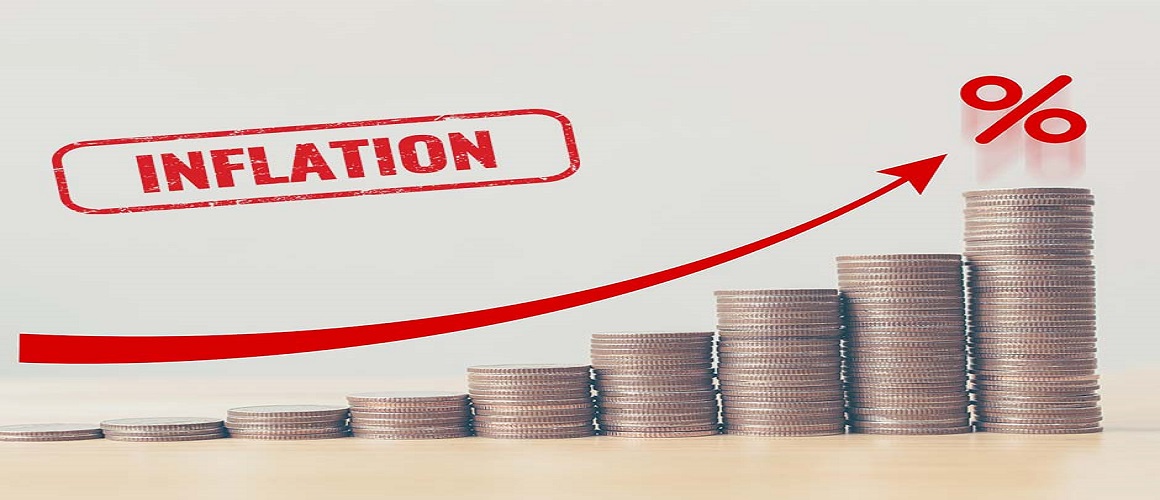Inflation Is Making Us Go Bonkers and Quite Feasibly, the FMCG Industry Too
15/09/2022 4 min read

Let’s face it, inflation has been a notion of massive headache since the beginning of time. Irrespective of all sectors of business, you are forced to deal with inflation anyway. But why, though? Well, it definitely does affect our cost of living, wages, debts, and even our savings as well as interest rates. Inflation spares no one and continues to terrorize our lives.
So, if you ask what exactly is inflation, in the simplest terms, we would tell you that it is the rise in living costs and expenditure over time. However, it is not as simple as that. Let us suppose we want to buy strawberry jam today, if we compare its price with that say, twenty years ago, we will probably find that, with the price of one jam today you could actually buy 2 of them twenty years ago! Isn’t that heart wrenching? Inflation does not only depend on how the demand for a product increase as compared to its supply, sometimes the rise in the money supply also tends to raise the price of our beloved strawberry jams. So, now that you have an idea about what inflation is, let’s dig deeper into how it’s impacting the fast-moving consumer goods (FMCGs) industry and how the challenge is being handled currently.

Know Your Market Terms in 2 Minutes
Before we delve deep into the statistics, let us understand what WPI and CPI mean and the relationship between the two. Wholesale Price Index (WPI) is the index or measure of the change in the wholesale level of the market, that is when businesses buy goods in bulk quantities. Consumer Price Index (CPI) is another index that measures the change in prices of goods and services that consumers pay for. WPI is the initial stage of a transaction flow, and CPI is the final stage, a balance is required to maintain the smooth flow of the economy. WPI increases by the day as prices of raw materials skyrocket due to their ever-rising demand after the recovery from the pandemic. If CPI does not catch up naturally a gap is created which has to be fulfilled by the companies, thus incurring invariable losses. The FMCG industry is suffering such a crisis that businesses have to brainstorm how to raise the CPI without risking the loss of consumers due to a price hike and still stay relevant in the market.
What is the FMCG Industry and How Is Inflation Posing a Threat to It?
The fourth largest sector in the Indian economy, the FMCG industry is the supplier of perishable consumer goods, which are always high in demand and sold equally in monstrous quantities. Being price-sensitive FMCG products are subjected to great impacts during inflation. Although inflation during the first quarter of the financial year 2022 has not been glaring with an actual softening from 13.56% to 12.96%, it is expected to rise in the last two quarters and surge even more in the first quarter of that of 2023. The impact on this sector is notable in the dilemma of figuring out whether to protect the volumes or margins of their products. It is expected that if the margin is protected, consumers might reduce demand. Furthermore, it is seen that for products falling under the range of lower price units between Rs 1 to Rs 10, companies cannot surge their price lest it should cause an impact on consumer demands. This has led to grammage costs being cut and consequently, its effects on demand are vivid.
Reports say FMCG companies have recorded a price hike of 10-15% in the current market. With a hike in the cost of oil, consequently transport, supply chain, and even lower production in volumes and lower margin cuts. The FMCG sector earns 36% of its sales in the rural sector. The surging of fertilizer prices and diesel prices has led the farmers to cut costs where necessary to be able to afford these raw materials. Consequently, consumer demand continues to fall as demand lessens. With the rise of prices, the rich get richer, and the poor get poorer. There is a shift in consumption evident between lower-income households and high-income ones. Besides, the purchasing power of the consumer lessens with the surge in prices. The consumer no longer has the freedom to buy the same amount of goods and services they used to with a stipulated amount.
Is the rise in oil and diesel prices raising queries in your mind? Get our analysts’ reports here to learn more.
What are the Reasons for Such Inflation?
Inflation is not only caused by one reason but is sometimes accompanied by several other related or even non-related reasons. A global phenomenon is recorded as central banks all around the world have started to hike interest rates. Considering the conflict between Russia and Ukraine, the fall in the supply of oil was anticipated and perceived. The rising cost of raw materials is glaring down on the FMCG sectors and disrupting their economy. Another noticeable issue is the plunge in consumer demands for goods like soaps, toothpaste, and so on and the effect it has on the industry currently. Consumers are opting for alternatives that are cheaper or relying on products in smaller-sized packages. With the surge in retail rate and grammage reduction, FMCG markets seem to attract fewer and fewer consumers to opt for their products.
To know how to fate of inflation and how to tackle the impact of inflation on your company, reach our analysts’ insights here.
Inflation is Raining Down on Each Sector of the FMCG Industry
While some sectors have it bad, others have it worse when it comes to inflation. Let us break down the FMCG industry and observe the impact of inflation on various sectors.
Is Inflation Wreaking Havoc in Food and Beverages Industry?
To answer the question, F&B industry has been hit by inflation. Due to the varying trends in different companies, some are winning and some are losing. Food industries like Dabur and Britannia are facing challenges as inflation glares down on the economy. Dabur is expected inflation of 4% to 5% on top of the already unprecedented amount of last year. Britannia is tackling a 2 % to 3% rise in commodity prices and expects to go for a price hike of 10%. However, it will still be insufficient to cover the inflation rate of 12%.
Following the trends of “shrinklation”, in the UK, Nestle has resorted to grammage cutting with 100 grams of coffee being reduced to 90 grams. Shrinklation is the term given to the reduction of the size of products by companies by keeping the price the same or increasing it by a bit to help in times of inflation. Gatorade has followed the same by reducing its bottle size from 32 ounces to 28 ounces. A similar pattern is found in Domino’s where the number of products in a dish has observed a decreasing trend, along with Frito’s cutting down on the size of their bigger packs. The US has seen a sharp rise in grocery prices from last year, that is, 11.7% in FY 2022. While store brands have seen a hike of 2.1%, nationwide brands have recorded 2.5%. The changing habits of the consumers have impacted heavily on the F&B industry. It is also observed that the big top global FMCG players like Kellogg’s, Campbell Soup Co., and Kraft Heinz all expect a rise in the annual sales post their rise in product prices.
Is the Consumer Goods Sector Equally Hit?
The rise in freight costs and raw materials has once again resulted in a gradual increase in inflation. To tackle the inflation packaged hitting products like household goods, Indian companies are targeting “bridge sizes” or sizes that are a bridge between the largest and the smallest sized packs. Some brands like Parle Products, Hindustan Unilever, and Cornitos are all following the path of introducing bridge-sized products to allow consumers to be retained without incurring massive losses. Due to the change in consumer habits, these bridge packs will help such companies remain in the competition as they push the consumers towards the transition to bigger packs. Over May 2020, a concerning growth in all commodities has been observed. The price of palm oil has increased by 97.6%, followed by soya oil, recording an 81.3% hike, and ground nut oil by 25.8%. Even the surging height of packaged milk is seen to cross over 60%.

How Are the Other Sectors of the FMCG Industry Affected by Inflation?
No FMCG sector has been able to escape the grasp of inflation. Analysis of the reports, it can be seen that over the years 2021 to 22, beauty products went through an average hike of 7.5%. Across various sections of beauty products, like facial skincare, cosmetics, nail and hair care and many more saw inflation varying from 3% to as much as 31%. Reaching a 40-high of 7.9% as compared to the last highest hike in 1981, the US is struggling to tackle the growth in prices and decrease in consumer spending. In the advent of the pandemic material goods like, copper, aluminum, and iron have all undergone a varying degree of price hikes between 25% and 75%. Diesel’s price has skyrocketed by 46.9%, shortly followed by petrol recording a surge of 45.9%.
The tobacco industry was similarly hit during the pandemic in 2020 when sales fell. However, with a rise in cigarette taxes, the price of smokes is not as harshly affected due to the rise in input cost. While other sectors are more or less negatively affected by inflation, the tobacco industry was shielded from inflation even with a 2% rise in its product prices.
Despite the price hike of products due to the rise in input costs, the margins of many sectors like staples and restaurant firms are at risk. With limited budgets of consumers, companies have to strive to remain relevant and competitive in the market in the face of any delay or postponement in the positive change towards the consumption of products throughout all sectors of the FMCG industry.
What is the plan of action for an FMCG firm in order to deal with inflation? Contact our analysts here.
How Will This Impact FY 2023 and How to Strategize?
The rise of unemployment in the current economy is soon to have an alarming impact on the global economy. The consumption of goods is falling down to stick to the bare minimum essentials for such households which are hit by unemployment. The fate of the economy of 2023 looks as daunting as one of the bigger inflation-hit times in history. As consumers begin to stick to essentials, causing a loss in the premium products market, the FMCG sector has to gear up to face this challenge. The volumes of consumption and consequently sales are expected degrow as they already did by 2.6% in the last quarter of 2021.
FMCG firms can strategize the crisis that inflation is causing on the market prices of goods and services and use it for their benefit and profit by playing the cards right. One of the strategies that work in the face of inflation is “shrinkflation”. Making the products affordable without increasing the selling price, they can be sold to consumers without putting a pull in their expenditure budget. Shrinking the size of the product by a little is a strategic way to stay competitive and relevant when prices of everything else are rising. Staying ahead in the competition by having a strong partnership with the suppliers is one of the foremost procurement strategies to come out of inflation victorious. Prepare for inflation by staying updated on market trends and considering group purchasing strategies, or buying extra in times of dip in prices of non-perishable goods. Other strategies can be to offset price increases by providing different incentives like extended warranties, extended or improved consumer services, providing discounts or waiving shipping fees, and so on.
Looking for tailored strategies for your business in the face of inflation? Get your unique report from our analysts today.





















 USA (+1) 351-333-4748
USA (+1) 351-333-4748
